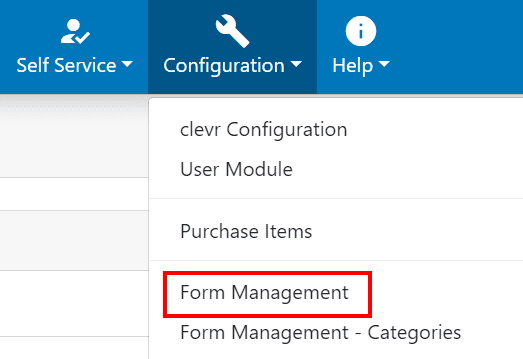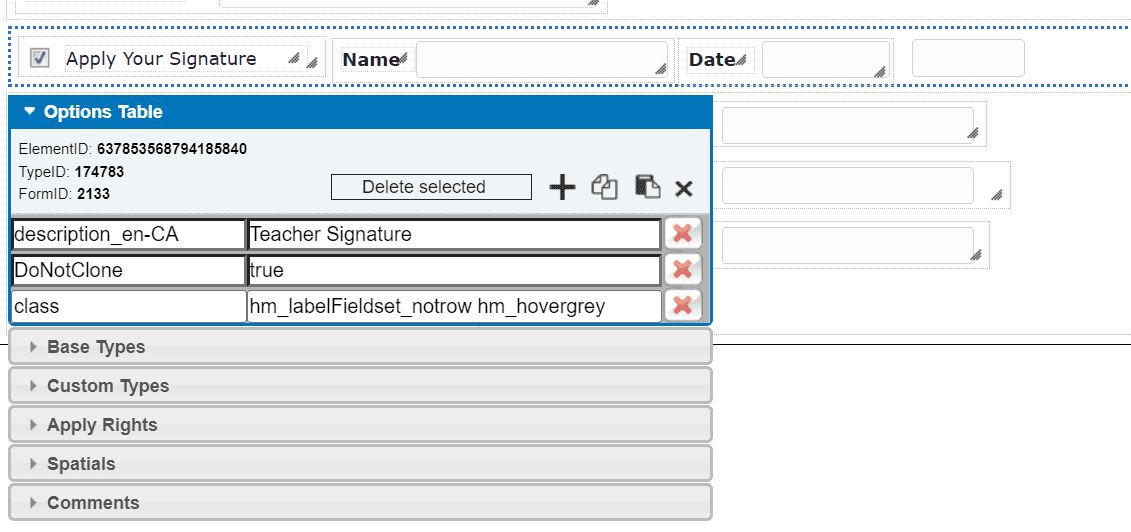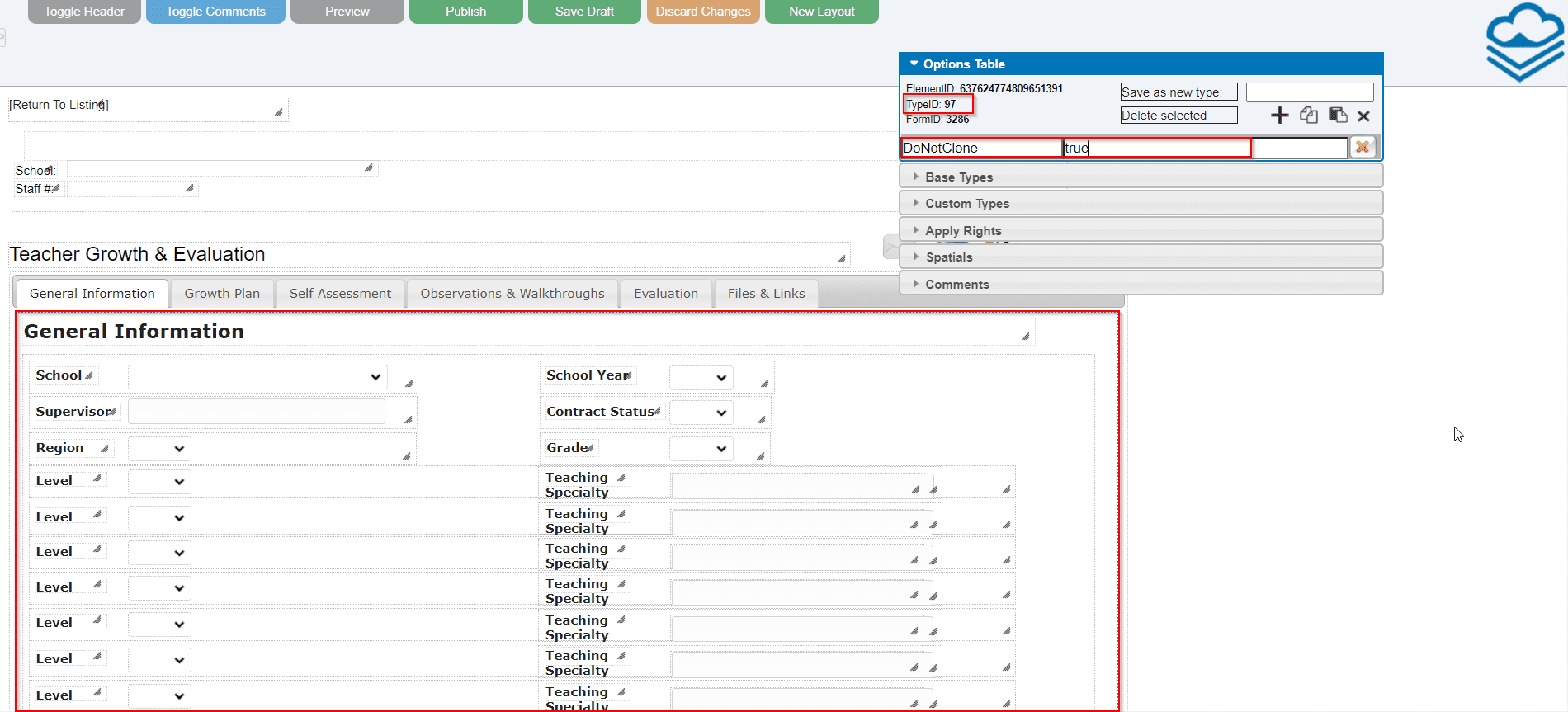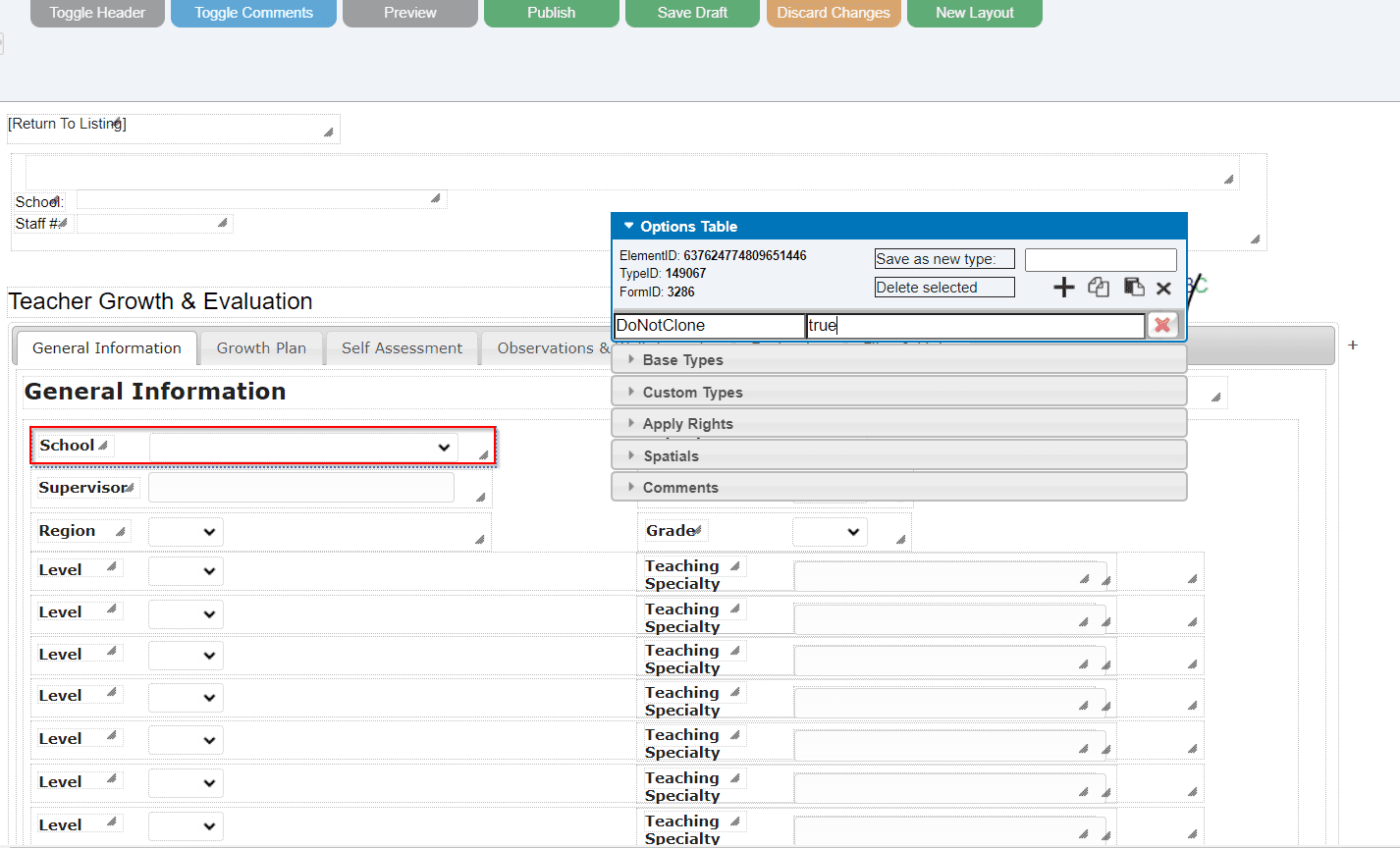Identifying DoNoClone and Flagging for Record Rollover


Step 1: Determining Which Fields Should Not be Cloned if a Cloning Rollover is Selected
What is a “DoNotClone”?
A DoNotClone is a flag that can be applied to fields or tabs on a form to prevent their values from being copied into a cloned record. This usually includes fields that have signatures, notifications, dates, fields that only apply to this year’s record, etc.
Signatures: You should apply a DoNotClone to all signature fields. This is to prevent a digital signature from existing on a record that the signer has never viewed.
Notifications: You should apply a DoNotClone to all notification fields as this will prevent the appearance that a notification was sent for the newly cloned record.
Finalization Sections / Locking Triggers: Since these fields control whether a record is locked (which means a read only status is applied to the entire record which prevents users from being able to edit the records), adding a DoNotClone to Finalization Sections / Locking Triggers is required to prevent the newly cloned record from being locked.
Functionality: A DoNotClone should be applied to any field that is related to a JavaScript workflow functionality that shouldn’t contain a value when a record is cloned. Examples of this could be checkboxes that trigger disabling functionality, elements that store information related to other fields that are already set to DoNotClone, and hidden fields that are used to store information for workflows.
Fields That Only Apply to a Specific Year: DoNotClones are often used on fields or tabs of a form where it doesn’t make sense to have the information copied because the data within the field only applies to the current school year. If the data in the field is irrelevant for next year, will be replaced by new data, or will be time consuming for users to manually remove, then a DoNotClone would apply.
Why Configuring “DoNotClones Before the Rollover is Important
Record Rollovers use DoNotClones for the reasons noted above. When a record is rolled over, sections that do not have a DoNotClone are copied into the new records. All fields flagged with a DoNotClone will be blank when the record is copied.
How to Identify Fields that have been Flagged with “DoNotClone”


- True: Indicates that a new record will be created for the specified form
(this will be true if the form is flagged for a New Record style
rollover or a Cloned Record style rollover).
- False: Indicates that a new record will not be created for the form after it
has been rolled over. This will appear for locked style Record Rollovers
where a new record will not be created.
- True: Indicates that the data will be copied to over to the new record with the exception of fields tagged with DoNotClone.
- False: Indicates that the data from the old record will not be copied to the new record.

Step 2: Flagging Fields as “DoNotClone” with the clevr Form Editor






Important Things to Consider
- “DoNotClone” will not propagate to subtabs. You must apply
“DoNotClones” to each subtab on the form individually on each parent
container (97) in the tab set.


Related Articles
How to Perform a Record Rollover
This article is a detailed guide on how to perform your record rollovers using the Record Rollover Wizard in Clevr. A Record Rollover is a process used within Clevr to archive records. It is typically performed once a year, usually during the summer ...Record Rollovers - Understanding the Three Rollover Types
Lock Existing Record Locking the existing record locks the past records while making it accessible within the Record History. This is a great option for forms about a specific or one time event where the person is not guaranteed to need a record for ...Your Clevr Record Rollover - 4 Step Process to Ensure Success
The record rollover in Clevr prepares your records for the following school year. Please follow the 4 step process outlined in this article to ensure school start-up success. Step 1: Watch Record Rollover Training Video Clevr's Rollover Wizard ...Clevr Rollover Timing Guide
The timing of your record rollover is a key indicator of success in preparing your records for the new school year. Please refer to the 3 options below to ensure your records are prepared as expected for the new school year. Click above image to ...How to Undo a Record Rollover
A record rollover can be undone within the Record Rollover Summary page. Navigate to the form that you’d like to undo the Record Rollover for and select View Details: Within the Rollover Details page, select the rollover you’d like to undo in the ...